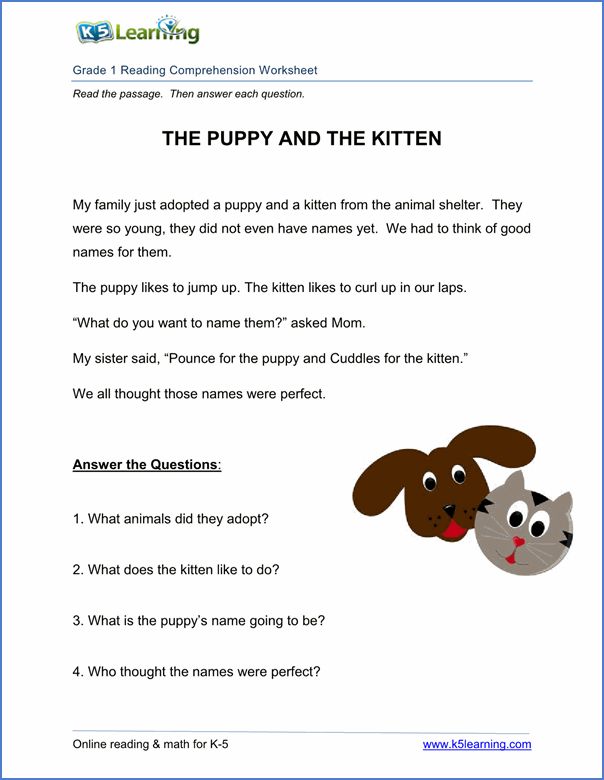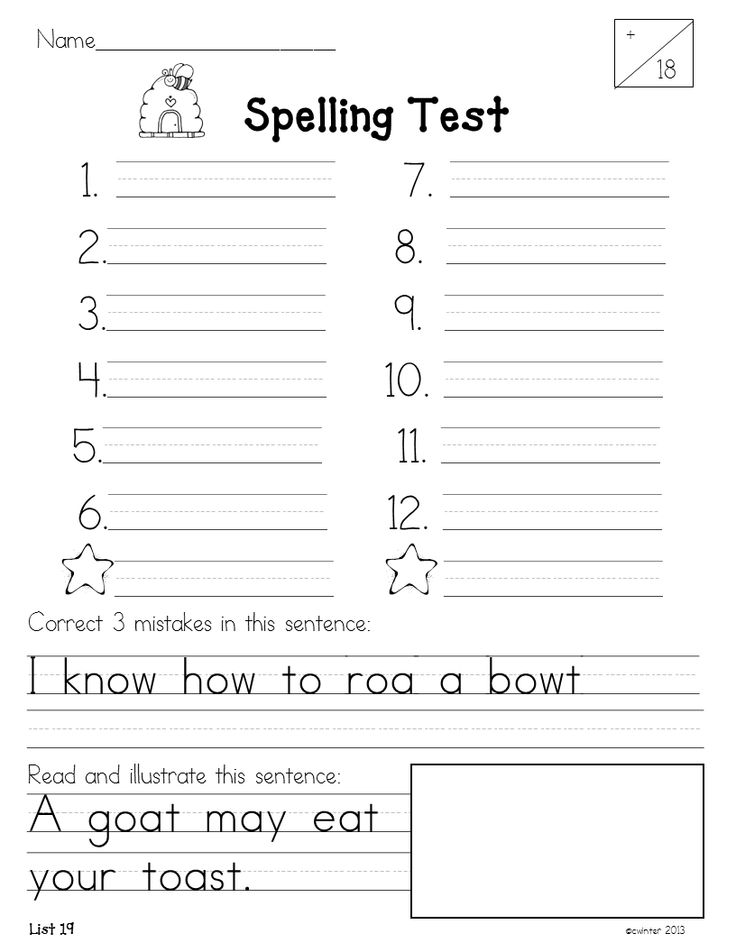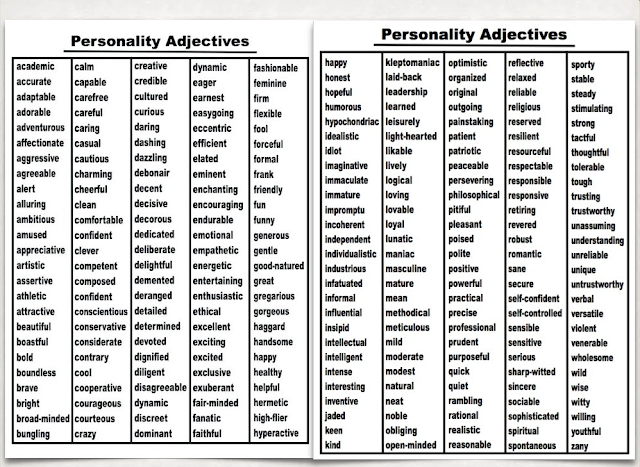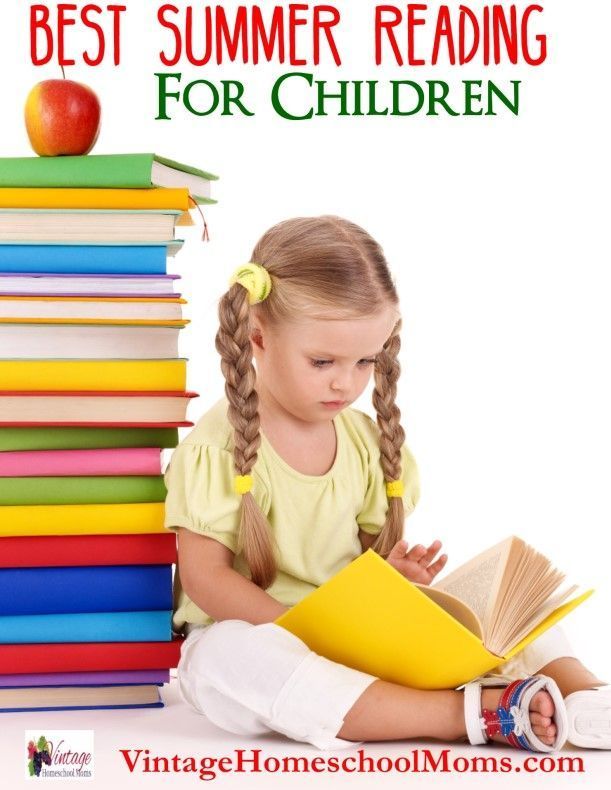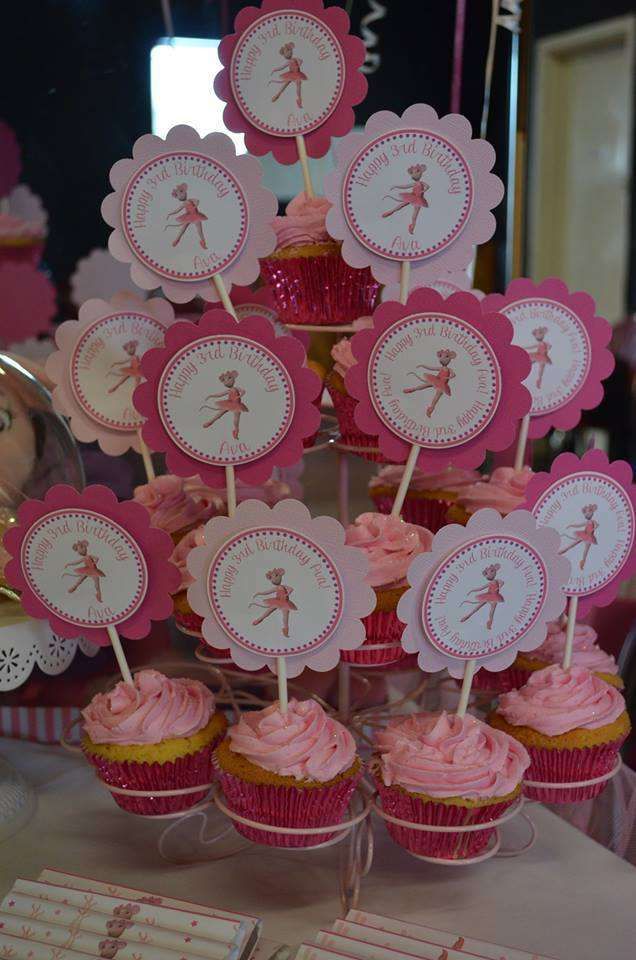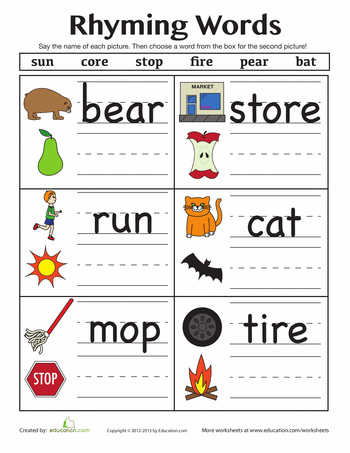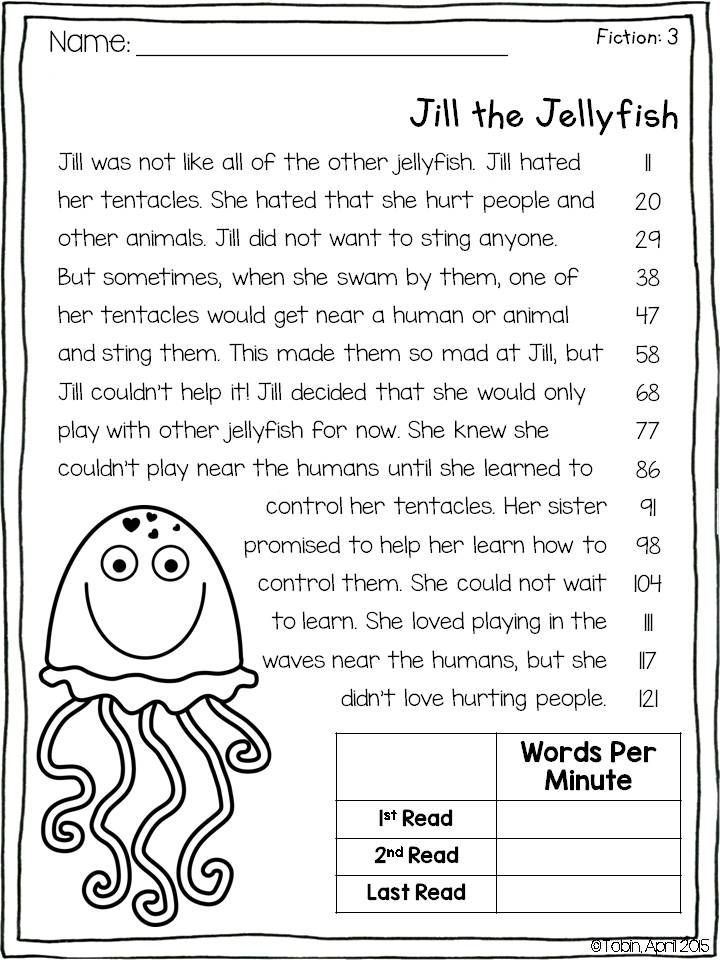7 types of syllables
The 6 (or 7) Syllable Types: What They Are, Why They Matter, And When To Teach Them!
The English language is a little crazy.
I mean, just read these words: through, tough, though, thought. Same spelling pattern, four different sounds! ?
But. As weird as our language can be, it’s also predictable and consistent in many ways. In fact, did you know that there are only 6 different types of syllables in English words?
Yup, only 6! (Or 7….but I’ll get to that later.) My point is that there REALLY AREN’T THAT MANY!
Why do the syllable types matter to us, as primary teachers? Because it’s essential that our students understand how English sound and spelling patterns work, and syllables are a big part of that.
Plus, knowing the 6 syllable types….
- Helps kids divide words into syllables to decode them or write them
- Helps kids predict the sound a vowel makes
- Makes it much easier to break up multisyllabic words
In this post (which is part of my blog series about teaching phonics), I’ll explain what the six syllable types are and when you might teach them to your students.
This post is relevant for first grade and up!
Okay, hang on. Before we get into the syllable types, let me define the word “syllable” for you:
A syllable is a unit of pronunciation that has one vowel sound.
Words can be made up of one syllable (i.e. chair) or several syllables (i.e. rhi/noc/er/os).
Syllable Type #1: Closed Syllable
What it is: A closed syllable is a syllable that ends with a consonant. The vowel has a short sound.
Word examples:
- hat (ends with a consonant, t, and has a short a sound)
- pigpen (this word has two closed syllables, “pig” and “pen,” both with short vowels -> pig/pen)
When to teach it: I usually teach this toward the beginning of first grade. Students should have lots of experience with CVC words. You can introduce 2-syllable words with 2 closed syllables (like “sunset” or “bathtub”) and explain what a closed syllable is. (By the way, in the “bathtub example, the division is bath/tub.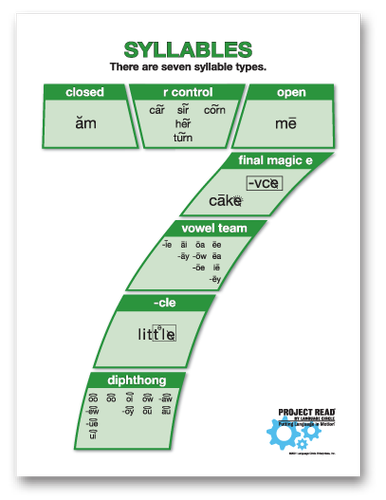 Even though the first syllable technically ends with t AND h, they’re a digraph and therefore make one consonant sound, /th/.)
Even though the first syllable technically ends with t AND h, they’re a digraph and therefore make one consonant sound, /th/.)
Syllable Type #2: Open Syllable
What it is: An open syllable has one vowel and is NOT “closed in” by a consonant. The vowel is “free to shout its name” (it’s a long vowel).
Word examples:
- me (no consonant at the end; the vowel is long and “says its name”)
- robot (the first syllable is “ro” and is open; the second syllable is closed -> ro/bot)
When to teach it: It works well if you teach the concept of an open syllable along with or shortly after teaching closed syllables. Again, the beginning of first grade is ideal for this – but you can also cover this concept at the end of Kindergarten if you’re introducing long vowel sounds. Words like “we” and “me” are great examples to use with Kinders, since they probably already know them by sight.
Syllable Type #3: Silent / Magic / Sneaky E / VCE
What it is: Whatever you wanna call it, the VCE (vowel-consonant-e) syllable type has a silent e at the end and a long vowel sound!
Word examples:
- bike (the silent e makes the i “say its name” – aka gives it a long vowel sound)
- mistake (the first syllable is “mis” and is closed; the second syllable is VCE -> mis/take)
When to teach it: This is a good concept to address during first grade, after students know their short and long vowel sounds. They should be familiar with the concepts of open and closed syllables. When you teach this syllable type, you can have students practice changing closed syllables to VCE syllables (i.e. taking “rid” and turning into “ride”).
They should be familiar with the concepts of open and closed syllables. When you teach this syllable type, you can have students practice changing closed syllables to VCE syllables (i.e. taking “rid” and turning into “ride”).
Syllable Type #4: Vowel Team Syllable
What it is: A vowel team syllable usually contains two vowels that come together to make one long vowel sound. I also call patterns like “igh” vowel teams, so Some people divide up this syllable type into vowel digraphs and vowel diphthongs for a total of 7 syllable types.
Word examples:
- steam (the vowel team is the e and the a coming together to make the long e sound)
- soapbox (the first syllable is “soap” and has the vowel team “oa;” the second syllable is closed)
When to teach it: I usually teach this in first grade – after students are very comfortable with open and closed syllables, as well as silent e. I always have to review this in second grade, too.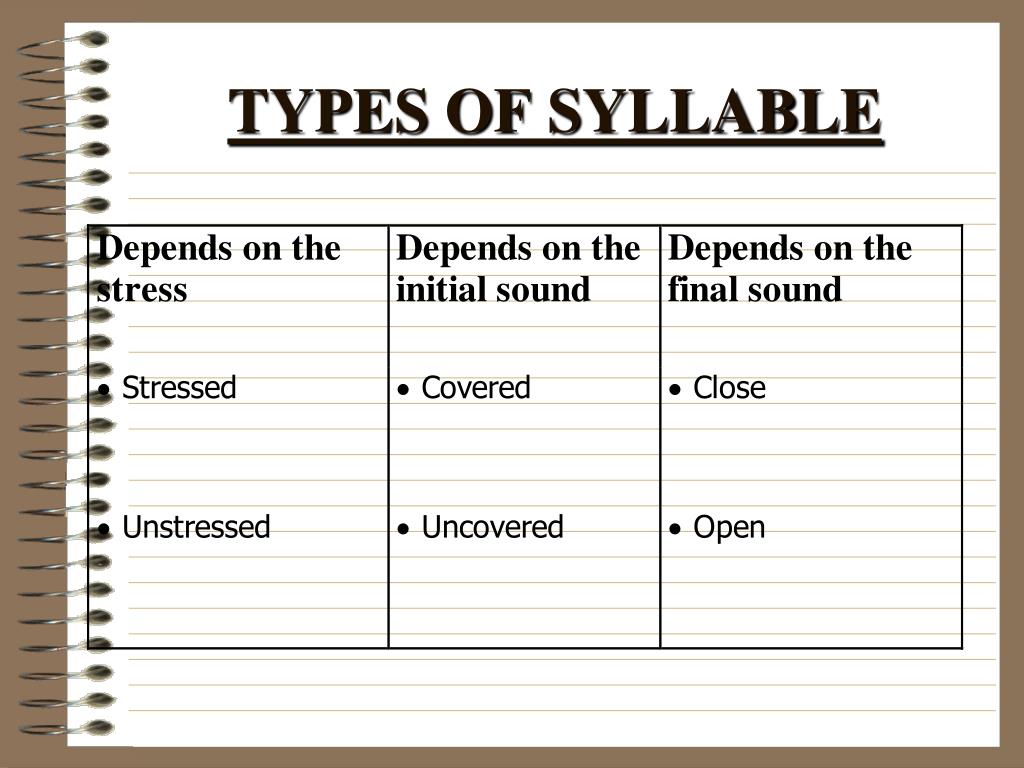
Syllable Type #5: R-Controlled Syllable
What it is: In an r-controlled syllable, the letter “r” follows a vowel. The vowel doesn’t make a short OR long sound – rather, it’s “controlled” or “influenced” by the r and makes a different sound altogether.
Word examples:
- star (the a is controlled by the r)
- lobster (the first syllable is “lob,” a closed syllable, and the second syllable is “ster,” an r-controlled syllable -> lob/ster)
When to teach it: I teach this in first grade. I feel like it’s a toss-up between r-controlled syllables and vowel team syllables – either concept can be taught after kids learn open syllables, closed syllables, and silent e. I definitely review this concept in 2nd grade. And there are some more complex r-influenced spelling patterns that can be covered in later grades.
Syllable Type #6: Consonant-L-E Syllable
What it is: In a CLE syllable, a consonant + the letters “l” and “e” come at the end of the syllable.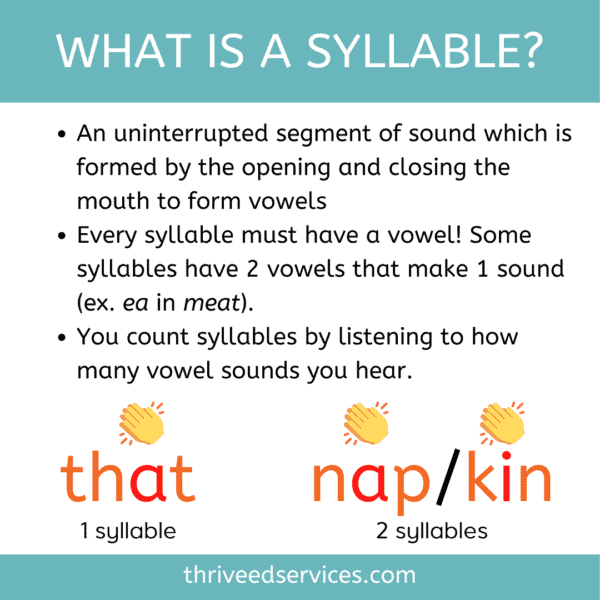
Word examples:
- table (the first syllable is “ta,” an open syllable, and the second syllable is “ble,” a CLE syllable)
- example (ex/am/ple – the first two syllables are both closed, and the last syllable, “ple,” is a CLE syllable)
When to teach it: This is usually the last syllable type that I teach, and we typically address it in second grade.
Conclusion
If you didn’t know about the 6 syllable types until you read this post, you’re not alone!! I didn’t learn about this in my undergraduate education program, nor in my reading specialist master’s program! I learned this stuff after becoming a teacher and even after becoming a reading specialist – but boy, it sure has made teaching phonics easier!
If you’re looking for more support in teaching syllable types to your students, check out the resource below. This will walk you and your kids, step-by-step, through the entire process.
1st grade teachers will likely progress through the lessons slowly, spreading them out throughout the entire year.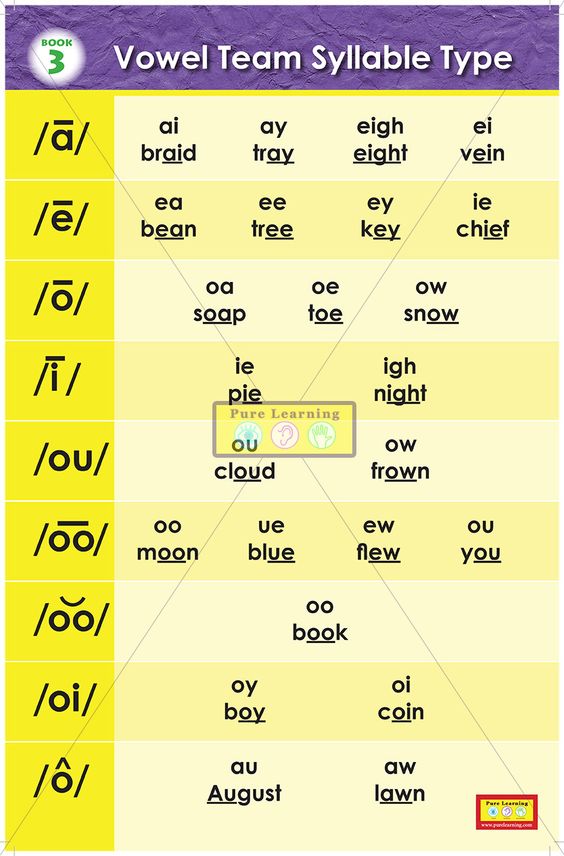 2nd grade and up may be able to progress more quickly. But either way, you can match this mini-program to ANY phonics or reading program that you use!
2nd grade and up may be able to progress more quickly. But either way, you can match this mini-program to ANY phonics or reading program that you use!
If you don’t need lesson plans and syllable activities but you do want some practice activities for your students, check out my digital Boom cards.
These activities give your students practice with identifying syllable types AND dividing words up into syllables.
The games also include audio directions that explain the syllable types and division rules!
Syllable division practice for 1st grade – covers open, closed, silent e, vowel team, and r-controlled syllable types, plus VC/CV, V/CV, and VC/V division rulesSyllable division practice for 2nd grade – covers open, closed, silent e, vowel team, r-controlled, diphthong, and consonant L-E syllable types, plus VC/CV, V/CV, and VC/V division rulesTo learn more about how to actually divide words up into syllables, check out this post.
Happy teaching!
The 7 Types of Syllables to Rock Your Phonics Lesson -
Let’s dig into the 7 types of syllables to rock your phonics lesson! To build strong readers, you have to teach the types of syllables! It’s not too late to start!
We’ve talked about teaching phonics explicitly during reading instruction…it’s important!
First…What is a syllable?
According to Anna Digilio from Guided Readers, “You’ll start with the basics by giving your students a definition of a syllable: a word, or a part of a word, that contains one vowel sound. A word can have one syllable or several, but every syllable must have a vowel.
A word can have one syllable or several, but every syllable must have a vowel.
The first and most basic skill you’ll want to teach your students is to hear and recognize the syllables in the words they hear.”
Let’s Count the Syllables!
After the students understand what a syllable is, they can count the number of syllables in a word. The easiest way to do this is by clapping. The students can say a word and clap each time their chin moves.
I’ve also tried other ways…tapping the number of syllables on our palm, putting a hand on the chin to feel movement, and stomping! What ways have you tried to count the number of syllables?
Can’t I Just Clap the Syllables?
Short answer…yes! However, don’t you want your students to actually understand the syllables to help them decode words? YES!
In early elementary, such as kindergarten, it is just fine to clap syllables and focus on letter sounds. As students move into 1st grade, they can continue to count the number of syllables, but it is also important to understand the types of syllables to better decode words.
So, go for it…clap the syllables AND discuss the types of syllables!
Why Should We Teach Types of Syllables to Rock Your Phonics Lesson?
In the classroom, we want the students to analyze words and notice common spelling patterns to recognize them in other words. When children can learn the different syllable types they can notice these patterns in many words. By doing this, the students decoding skills will improve and the student will become a more fluent reader.
This quote from, Pride Reading Program, explains why syllable division is important in the perfect way…
“Breaking up words into syllables or chunks is a really important part of the reading process. Syllabication helps children learn to read and spell difficult words. If your child gets stuck on a difficult word, they can use the syllabication rules to figure it out.”
So What Are the 7 Syllable Types?
A list of the 7 types of syllables to help your phonics lesson.

Read below to learn more about the 7 types of syllables to rock your phonics lesson. Click HERE to go straight to resource.
- Open syllable: The open syllable makes a long vowel sound and the vowel is not closed by a consonant. Examples of words with an open syllable:ro-bot, mu-sic, ve-to, re-peat, tem-po. Watch this VIDEO to see this phonics tip in action.
- Closed syllable: The closed syllable makes a short vowel sound. The vowel is closed by a consonant. Examples of words with a closed syllable: mag-net, mu-sic, ten-nis, sun-tan. Watch this VIDEO to see this phonics tip in action.
- Magic E syllable: The magic e syllable ends with a magic e that changes the vowel to a long vowel sound. Examples of words with a magic e syllable: cup-cake, sun-shine, play-time, stove-top
- Vowel Team syllable: The vowel team syllable contains 2 vowels that create a long vowel sound. Examples of words with a vowel team syllable: re-peat, oat-meal, ex-plain, fif-teen
- Diphthong syllable: The dipthong syllable contains 2 vowels that create a new vowel sound.
 Examples of words with a dipthong syllable: res-cue, see-saw, joy-ful
Examples of words with a dipthong syllable: res-cue, see-saw, joy-ful
- R controlled syllable: The r-contolled syllable contains a vowel followed by the letter r, which changes the vowel sound. Examples of words with a r-controlled syllable: cur-few, flow-er, win-ter. Watch this VIDEO to see it in action!
- Consonant -le syllable: The consonant -le syllable is a final syllable that contains and consonant and -le. Examples of words with a consonant -le syllable: can-dle, sta-ple, jun-gle, pud-dle
Resources to Help With Syllable Types
I have created the “We Love Phonics” program to make it easier for teachers to introduce and teach phonics skills. I have created a resource that will guide you for an entire school year, with lesson slideshows and worksheets that correspond to each skill.
Many of these resources will be perfect when teaching syllable types. It will give explanations of the concepts, e.g.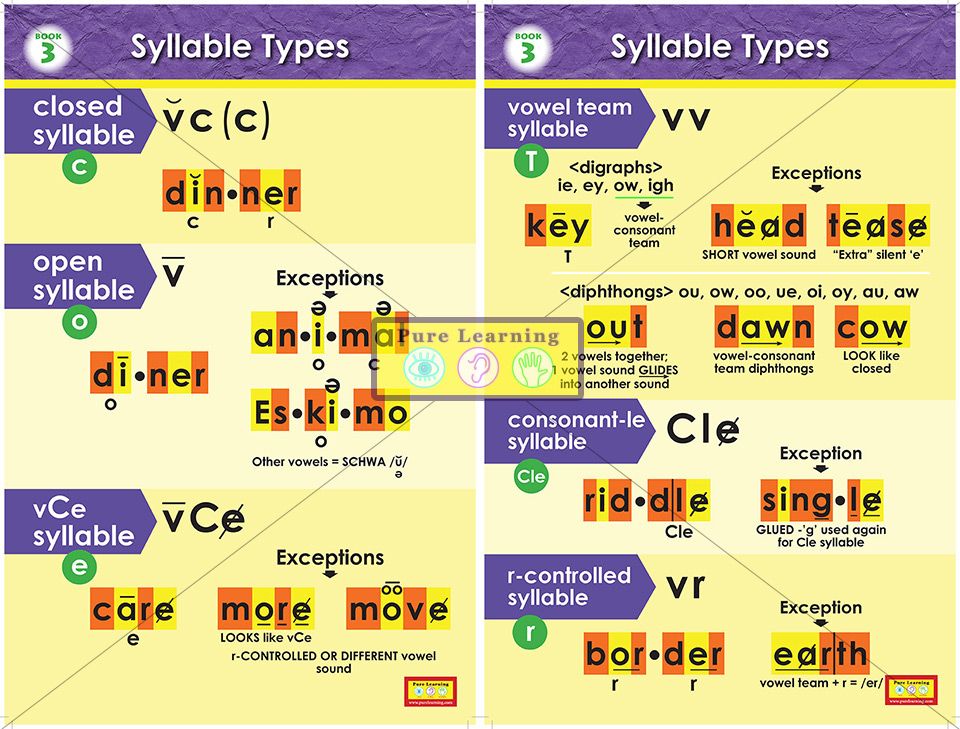 open and closed syllables, r-controlled vowels, magic e, and vowel teams. The next unit I am working on will be perfect for 2nd grade students and will contain more multi-syllabic words. To get the printable posters and the steps in a printable format…head HERE!
open and closed syllables, r-controlled vowels, magic e, and vowel teams. The next unit I am working on will be perfect for 2nd grade students and will contain more multi-syllabic words. To get the printable posters and the steps in a printable format…head HERE!
Is it 6 Syllable Types or 7 Syllable Types?
The Orton Gillingham Online Tutor, “There are Orton-Gillingham based programs teach these in a different order and some include a seventh syllable type which is entitled Diphthong.”
I definitely like to include this syllable type. I usually introduce this type of syllable towards of the end of first grade. Once we learn the dipthongs, I will gradually practice with multi-syllabic words. Some programs exclude this type of syllable, but it would be a benefit to include in primary and intermediate grades.
Which Syllable is Stressed?
The article from pronuncian.com states learning the way syllables work and are spoken will greatly help English language learners.
“When a word has more than one syllable, a single syllable within the word is given more emphasis than any of the other syllables. That syllable is considered to be the stressed syllable. The vowel sound of the stressed syllable is emphasized by being pronounced longer, louder, and often at a higher pitch than the surrounding syllables. Vowel sounds of stressed syllables are more likely to be phonetic (pronounced as the spelling would suggest).”
If you have ELL (English Language Learners) in your classroom or an ELL teacher, teaching the 7 types of syllables will benefit your students and improve their decoding skills.
What about SoR?
Would you like a FREE Science of Reading Guide? This simple guide will take you step-by-step on the SoR journey!
Types of syllables in English - open and closed syllables
October 4, 2017
6 min. read
364258
Each English word is a whole, but at the same time a unique mosaic, which was assembled from separate, tiny parts called syllables.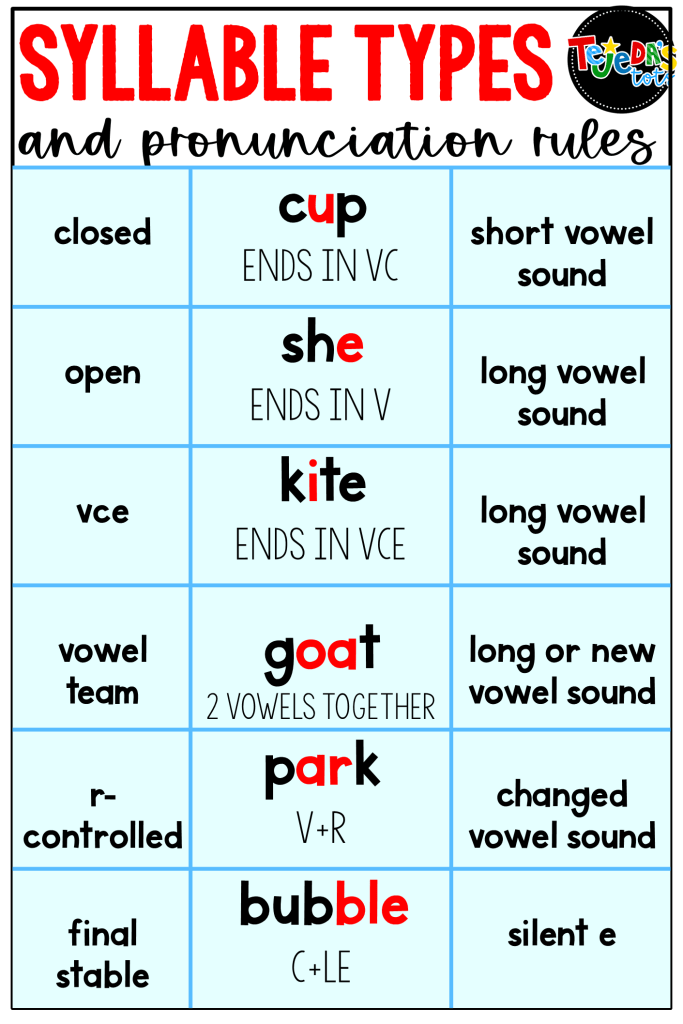 A syllable can be a letter, and sometimes a whole group of consonants and vowels, which the English pronounce differently. But, despite the varied reading, there are only four main types of syllables in English: open and closed, syllables like “vowel + r” and “vowel + r + vowel”. Well, let's discuss them in more detail. Let's do this!
A syllable can be a letter, and sometimes a whole group of consonants and vowels, which the English pronounce differently. But, despite the varied reading, there are only four main types of syllables in English: open and closed, syllables like “vowel + r” and “vowel + r + vowel”. Well, let's discuss them in more detail. Let's do this!
Open syllable in English (Type I)
Features:
- Only one vowel is used in an open syllable.
- The vowel is pronounced the same as in the alphabet.
- A vowel is the last letter in a syllable.
- Open syllables have at most one consonant between the open syllable and the next vowel.
Examples of reading vowels in an open syllable:
Letter « A » [ eɪ ] -fame [feɪm] - glory, baby ['beɪbɪ] - child, female ['fi: meɪl] - female.
The letter " O " [ əu ] - note [nəut] - note, zero ['zɪərəu] - zero, frozen ['frəuz(ə)n] - frozen.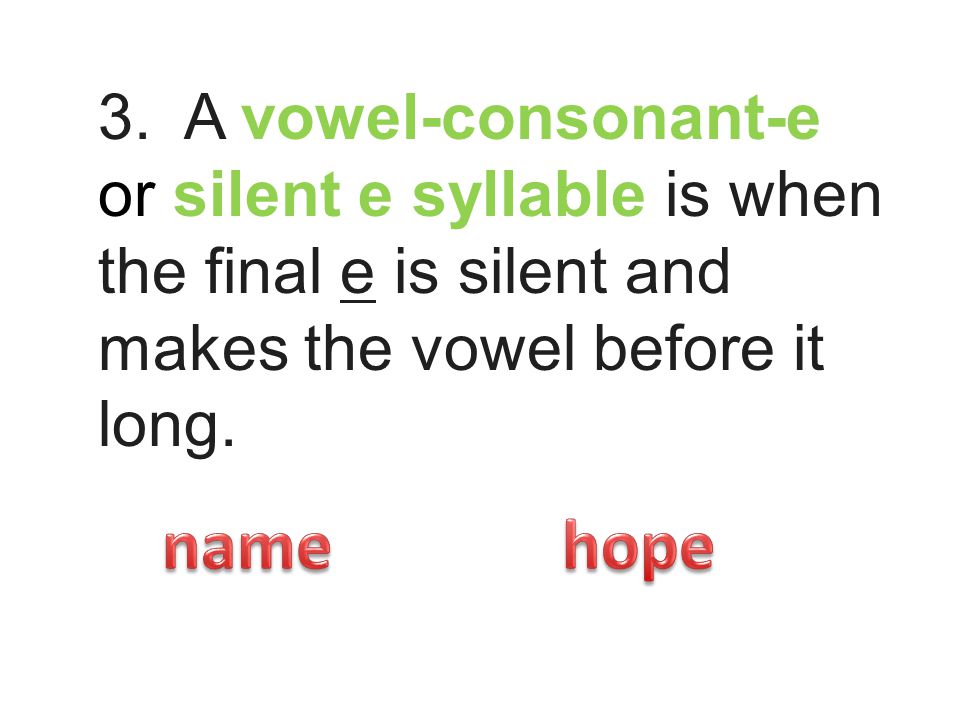
The letter “ E ” [ ɪ ] - we [wɪ] - we, behind [bɪ'haɪnd] - behind, uneven [ʌn'i: v (ə) n] - unbalanced.
The letter “ I ” [ aɪ ] – icy ['aɪsɪ] – icy, iris ['aɪərɪs] – iris (eyes), ivory ['aɪv(ə)rɪ] – ivory or cocaine.
Letter " Y " [ aɪ ] - wry [raɪ] - curve, apply [ə'plaɪ] - make a request, descry [dɪ'skraɪ] - consider.
Letter « U » [ ju :] – funeral ['fju:n(ə)rəl] – funeral, museum [mju:'zi:əm] – museum, universe ['ju:nɪvɜ:s] - the universe.
Read also
Difference between modal verbs will and would
Closed syllable in English (Type II)
Features:
- Only one vowel is used in a closed syllable.
- If a word consists of only two letters, then it must necessarily end in a consonant.
- If there are only three letters in a word, then in a closed syllable one consonant comes before and one (or more) comes after the vowel.
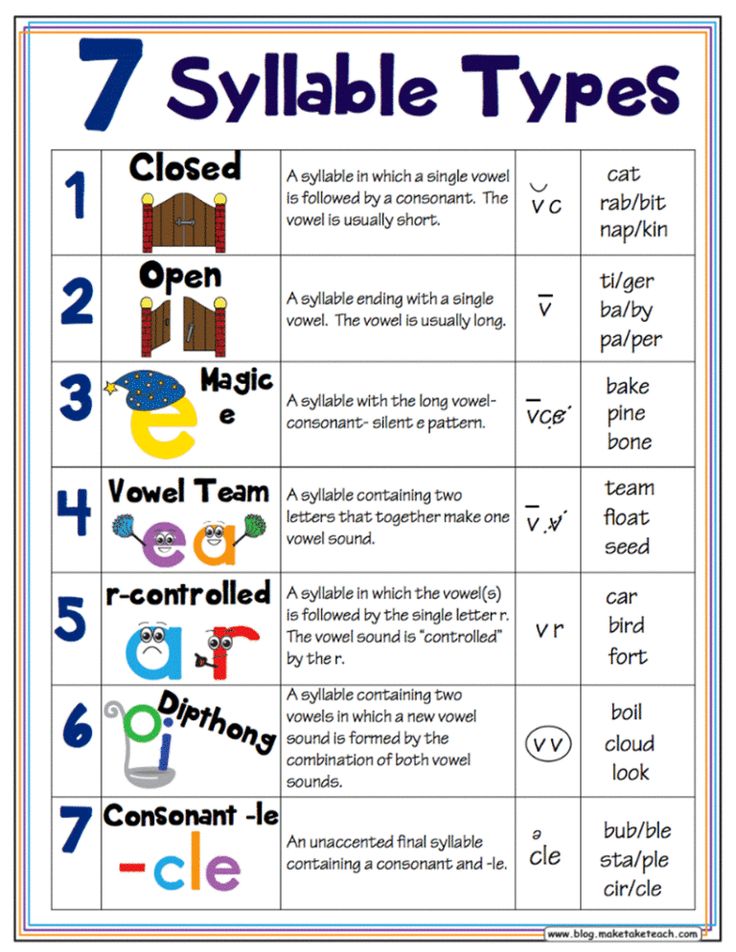
- In the event that the word has two closed syllables following one another, there will be consonants between the vowels.
- All sounds are short/short.
Examples of reading vowels in a closed syllable:
Letter « A "[ æ ] - tomcat ['tɔmkæt] - cat, wombat ['wɔmbæt] - wombat, snatch [snætʃ] - robbery.
The letter " O " [ ɔ ] - clot [klɔt] - lump, pol [pɔl] - politician, common ['kɔmən] - universal.
The letter " E " [ e ] - gen [dʒen] - information, businessmen ['bɪznɪsmən] - entrepreneurs, nest [nest] - nest.
Letter « I » [ ɪ ] - chit [tʃɪt] - note, splinter ['splɪntə] - splinter, miff [mɪf] - spat.
The letter " Y " [ ɪ ] - mythology [mɪ'θɔlədʒɪ] - mythology, system ['sɪstəm] - system, mystify ['mɪstɪfaɪ] - to mystify.
Letter « U » [ ʌ ] - make-up ['meɪkʌp] - make-up, rummer ['rʌmə] - large glass, blush [blʌʃ] - blush.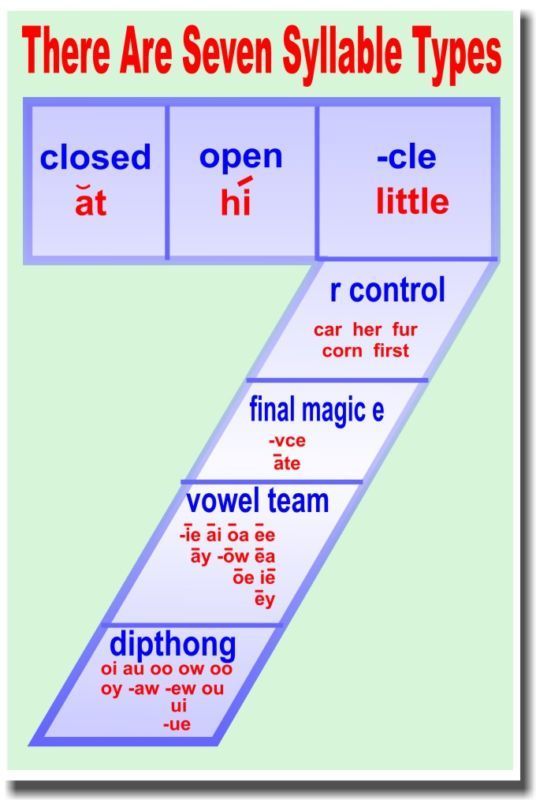
Syllable of the form "vowel + r" (III type)
Features:
- Last letters of the syllable: (consonant) + vowel + "r".
- In this type of English syllable, all sounds are long and in transcription have a special designation in the form of ":".
Examples of reading the third type:
The letter " A " [ ɑ: ] - barge [bɑ: dʒ] - barge, bazar [bə'zɑ:] - masquerade fair under the oriental bazaar, guitar [gɪ' tɑ:] - guitar.
The letter " O " [ ɔ: ] - pork [pɔ:k] - pork, torque [tɔ:k] - twisted metal necklace, orc [ɔ:k] - orc.
Letter « E » [ ɜ: ] – erne [ɜ:n] – white-tailed eagle, therm [θɜ:m] – heat unit, fern [fɜ:n] – fern.
Letter “ I ” [ ɜ: ] – pirn [pɜ:n] – coil, smirch [smɜ:tʃ] – dirty spot, kirn [kɜ:n] – harvest festival.
The letter " Y " [ ɜ: ] - myrrh [mɜ:] - aromatic resin, myrtle ['mɜ: tl] - myrtle, Mr.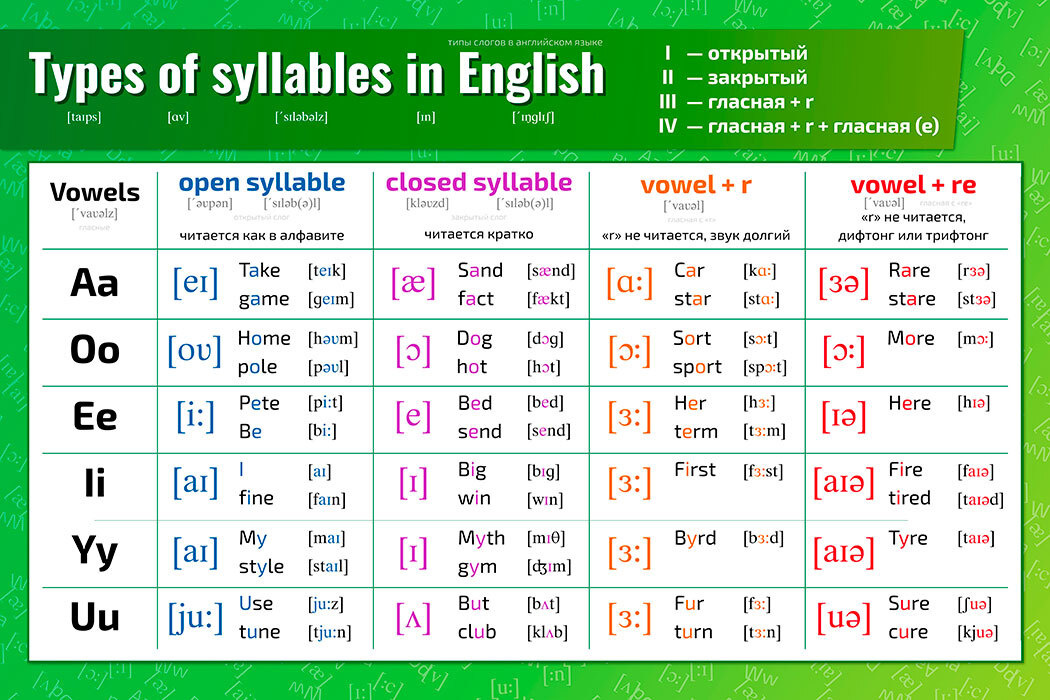 Byrd [bɜ: rd] - Mr. Byrd.
Byrd [bɜ: rd] - Mr. Byrd.
The letter " U " [ ɜ: ] - spur [spɜ:] - spur (on shoes), blur [blɜ:] - spot, concur [kən'kɜ:] - occur simultaneously.
Syllable of the form "vowel + "r" + vowel" (Type IV)
Features:
- Some vowels become triphthongs or diphthongs.
- Diphthong ( diphthong ) - a sound formed by a combination of two vowels in one syllable, in which the sound is first pronounced as one vowel, but then smoothly flows into another.
- Triphthong ( triphthong ) is a combination of three letters or sounds.
Reading examples of the fourth type:
Letter « A » [ ɛə ] – Maryland ['mɛərɪlænd] – Maryland, wary ['wɛərɪ] – careful, canary [kə'n.ɛə
The letter " O " [ ɔ: ] - shore [ʃɔ:] - shore, more [mɔ:] - more numerous, swore [swɔ:] - swore.
The letter " E " [ ɪə ] - sphere [sfɪə] - ball, here [hɪə] - here, revere [rɪ'vɪə] - to read.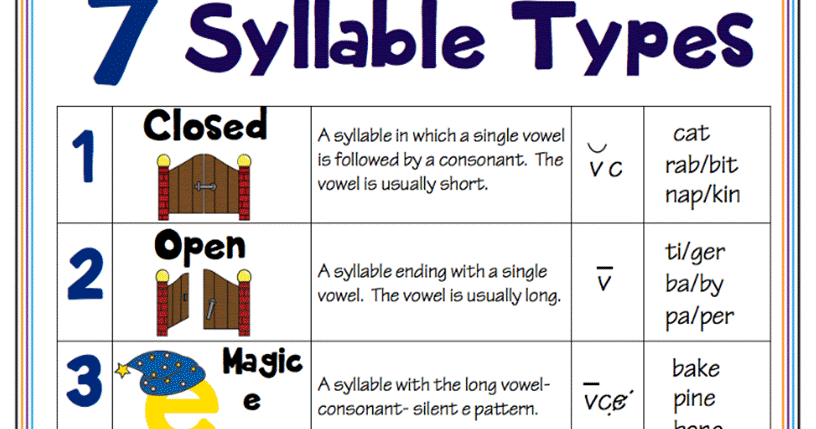
The letter “ I ” [ aɪə ] – mire ['maɪə] – bog, crossfire ['krɔsfaɪə] – crossfire, retirement [rɪ'taɪəmənt] – retirement.
Letter « Y » [ aɪə ] - tyre ['taɪə] - tire, lyre ['laɪə] - lyre, gyre ['dʒaɪə] - circular rotation.
The letter " U " [ juə ] - purely ['pjuəlɪ] - without impurities, cureless ['kjuələs] - incurable, demure [dɪ'mjuə] - modest.
Silent vowel "E"
- A voiceless syllable or a syllable with a silent vowel "e" at the end.
- Consists of a vowel followed by a consonant and then the letter "e", which is just not pronounced.
- As a rule, this is the final syllable in the root part of the word.
Reading examples: fake [feɪk] - fake, centime ['sɑ:nti:m] - centime, commune ['kɔmju:n] - community etc.
NOTA BENE : In English, silent vowels at the end of words are considered an indication that syllables are open. Accordingly, vowels are read in exactly the same way.
Accordingly, vowels are read in exactly the same way.
Read also: How to stress English words and sentences
How to become an English pronunciation guru
- Record your speech on a voice recorder to identify problematic aspects of pronunciation that you should work on in the future.
- Take your time and watch your breathing, as the speed of speech is not always an indicator of fluency and clear pronunciation.
- Close your eyes and visualize the process of sound creation at the moment of speaking.
- Pronunciation is a physical skill, because while speaking in a foreign language, you use different facial muscles. For this reason, always practice sounds that don't come out.
- Good pronunciation is not just learning individual sounds. Make time for intonation and stress.
- Practice in front of a mirror, paying attention to the position of your mouth and tongue.
- Listen to English-language podcasts, watch movies and repeat after native speakers.
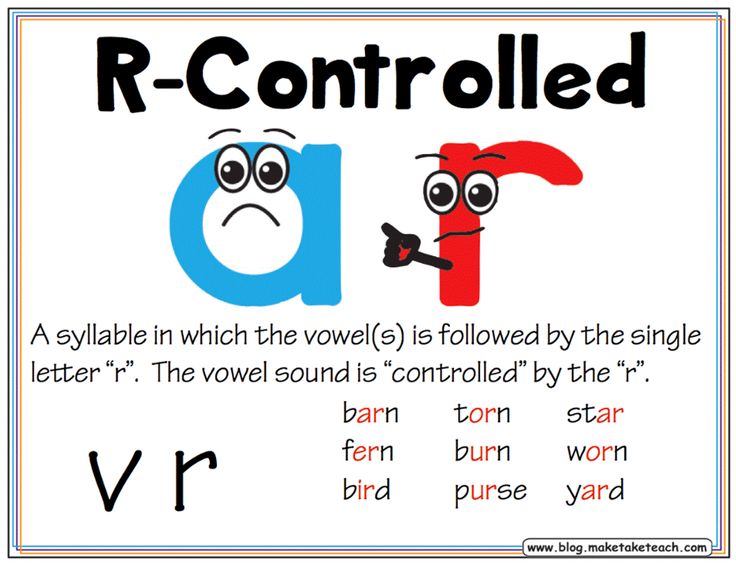
- Pronunciation problems persist because we are afraid of making mistakes. Do not be afraid.
- Practice speaking when you are alone in a comfortable environment.
- Find a language learning buddy and exchange opinions. A little criticism from the outside is a useful thing.
- Sing your favorite songs in English, feel the rhythm and intonation accents.
- And finally, be sure to read the article on the rules of reading English vowels and consonants, in order to become a master of phonetics for sure.
Read also
Bury a Friend (Billie Eilish) lyrics
Conclusion
Although learning the types of syllables in English will take some time, simple reading rules will subsequently help improve not only phonetics, but also spelling. In addition, this will allow you to expand your vocabulary and use new knowledge during live communication with natives.
Speak English right and be awesome ;)
Large and friendly family EnglishDom
Author
EnglishDom
Article rating:
Thank you, your vote counted
Types of syllables in English: open and closed 90 90 s2 The English vowel system at first glance seems very confusing.
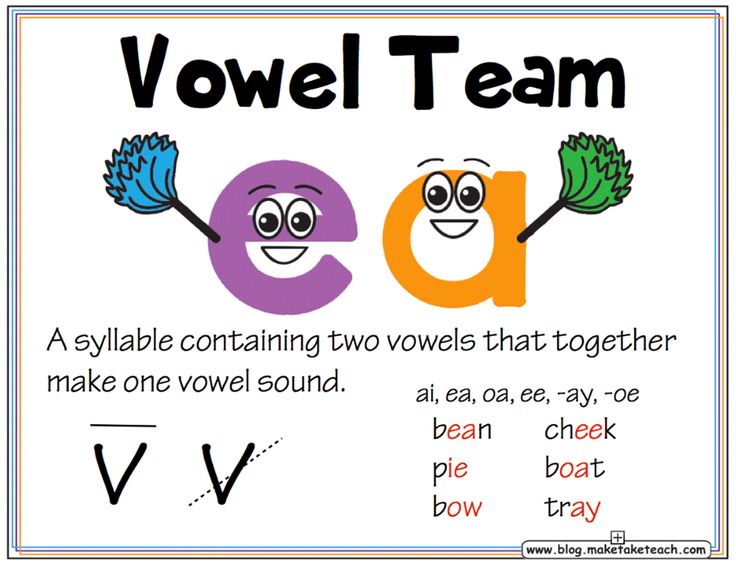 Of course, because there are only 6 letters in the alphabet, and 20 sounds! But everything is subject to certain rules, which are not so difficult to understand. The whole secret is in the syllables into which each word is divided.
Of course, because there are only 6 letters in the alphabet, and 20 sounds! But everything is subject to certain rules, which are not so difficult to understand. The whole secret is in the syllables into which each word is divided. Learning to read is impossible without knowing the basics of syllable division, which is the number of vowels in a word. So, for example, a syllable is: a-tom, i-tem. The letter l + e and r + e, where “e” is not pronounced, is also a separate part of the word: ta-ble, ti-tle.
Types of syllables in English are divided into stressed and unstressed.
Drums are formed into specific groups:
1st. Open
First of all, mentally divide the word into syllables, then look at which letter it ends with:
- the vowel at the end indicates an open syllable, which means it is pronounced as in the alphabet (“a” - hey, “o” - oh): see, go, he.
- if the word ends with “e”, it is called silent e, then the syllable is also open: pale, sake, like.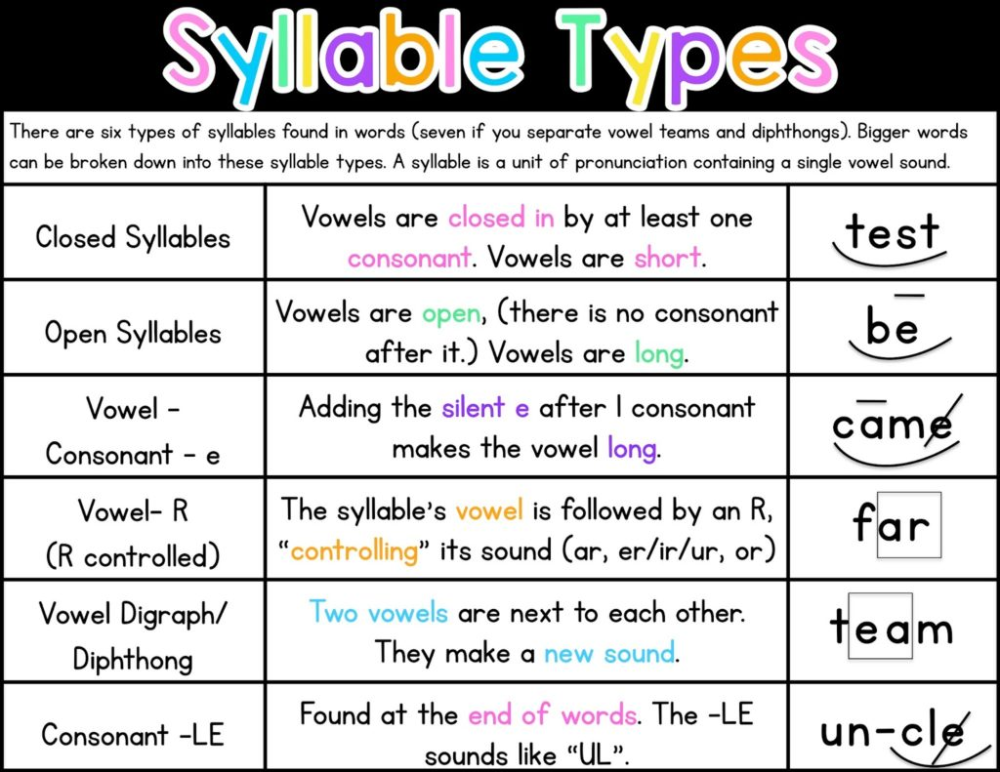
2nd. Closed
Almost all English syllables ending in a consonant can be classified as closed (with the exception of the letter “r”): bag, fun, plan.
3rd. Syllable with letter “r”
If after the stressed vowel there is “r”, which is not pronounced, then the vowel becomes long: firm, sport, car.
4th. Syllable with the letter “r” + “e”
The letter “e” is silent, it is not pronounced, just like “r”. It is these letter combinations that are called diphthongs and triphthongs: parents, fire, pure.
Each vowel is pronounced differently depending on the open or closed syllable. All of them must be learned by heart and practiced through various phonetic exercises.
1st: Aa - [ei] - correspond to the Russian "hey", Ee - [i:] - similar to the extended Russian "i", Yy - [ai] - to "ay", Ii - [ai ] - "ay", Uu - [ju:] - for an extended "yu", Oo - [ou] - pronounced like "oh".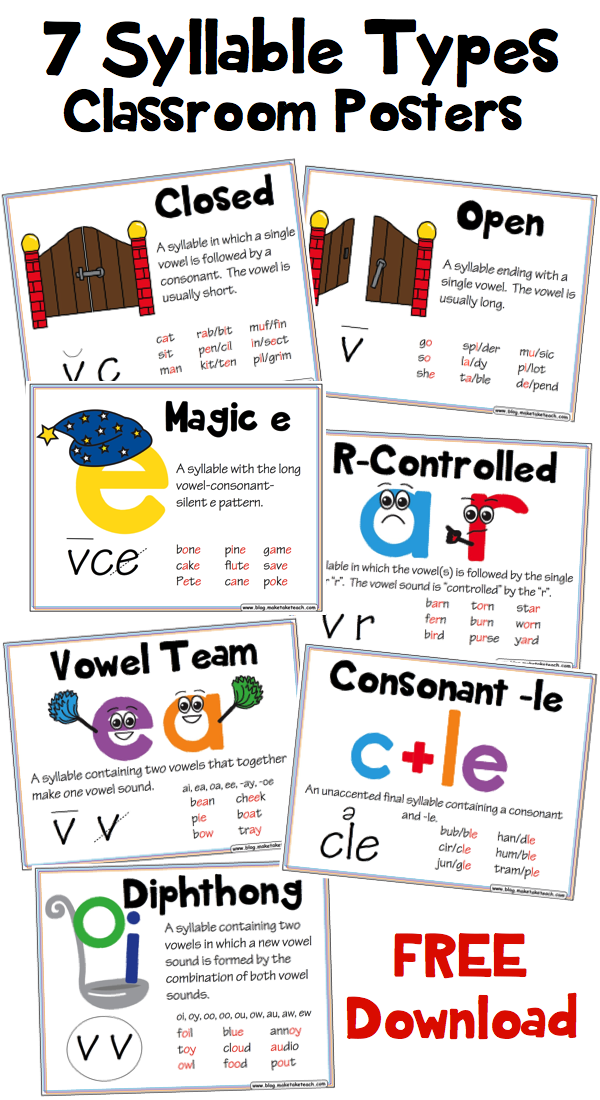
Aa - make, Ee - we, Ii - time, Yy - type, Uu - tube, Oo - note.
2nd: Aa - [æ] - the average of the sound of the Russian letters "e and a", Ee - [e] - "e", Yy - [i] - "i", Ii - [i ] - "and", -Uu - [ʌ] - "a", Oo - [ɔ] - reads like Russian "o".
Aa - cat, Ee - bed, Ii - sit, Yy - system, Uu - cup, Oo - not.
3rd: Aa - [a:] - correspond to the extended Russian "a", Ee - [e] - "e", Yy - [ə:] resembles something between the Russian "e and o ”, a little sound “e”, Ii - [ə:] - a mixture of “e and o”, a little from the sound “e”, Uu - [ə:] - “e and o”, Oo - [ɔ:] - extended "about".
Aa - car, Eee - her, Ii - girl, uu - cure, Oo - more.
4th:: Aa - [ɛə] - sounds like Russian "ea", Ee - [iə] - "ie", Yy - [aiə] - "th", Ii - [aiə] - "aya" , Uu - [juə] - "yue", Oo - [ɔ:] - long "o".
Aa - share, Ee - here, Ii - fire, Yy - tyrant, Oo - more.

Learn more

